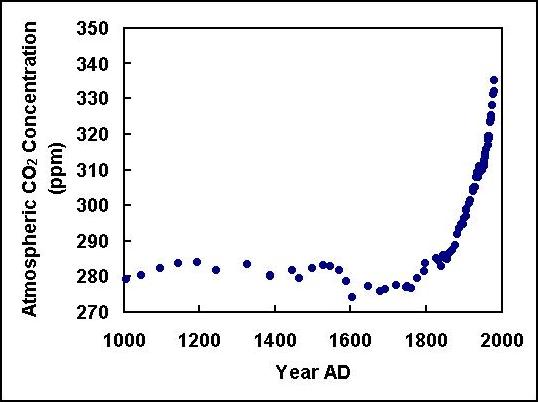| Tweet | Follow @co2science |
Paper Reviewed
Gennaretti, F., Arseneault, D., Nicault, A., Perreault, L. and Begin, Y. 2014. Volcano-induced regime shifts in millennial tree-ring chronologies from northeastern North America. Proceedings of the National Academy of Sciences USA 111: 10,077-10,082.
In a study published in the Proceedings of the National Academy of Sciences USA, Gennaretti et al. (2014) report that dated records of ice-cap growth from Arctic Canada recently suggested that "a succession of strong volcanic eruptions forced an abrupt onset of the Little Ice Age between AD 1275 and 1300," citing Miller et al. (2012). And noting that "additional support from field data are limited," they developed a new network of millennial tree-ring chronologies from the taiga of northeastern North America (NENA), which they say "fills a wide gap in the network of the Northern Hemisphere's chronologies suitable for temperature reconstructions," adding that they also support "the hypothesis that volcanoes triggered both the onset and the coldest episode of the Little Ice Age."
Also of great significance was Gennaretti et al.'s detection of a "well-expressed Medieval Climate Anomaly (approximately AD 910-1257)," which they describe as comprising "the warmest decades of the last millennium." Immediately thereafter, however, the five researchers say their tree-ring-based temperature reconstruction "displays an abrupt regime shift toward lower average summer temperatures precisely coinciding with a series of 13th-century eruptions" that shortly thereafter saw the development of "ice-cap expansion in Arctic Canada."
So what does all of this have to do with CO2 and climate? Consider the figure below that was developed by Etheridge et al. (1998) based on ice core data obtained at Law Dome, Antarctica.

It is to be noted, first of all, that the Medieval Warm Period of AD 910-1257, reported by Gennaretti et al. as the warmest period of the last millennium, occurred when the air's CO2 concentration was approximately 120 ppm less than what it is today. Second, it can be seen that the following Little Ice Age, which was the coldest period of the current intergacial, occurred in air of essentially the same CO2 concentrations as those of the Medieval Warm Period. And these two observations clearly indicate that Earth's current level of warmth need have nothing at all to do with the rise in the air's CO2 content that accompanied the Industrial Revolution and mankind's expanding usage of fossil fuels; for the planet experienced significant periods of both warmer and colder temperatures than those of the present over a period of time - the first 800 years of the century depicted in the graph above - when the atmosphere's CO2 concentration varied by something on the order of only ± 5 ppm.
References
Etheridge, D.M., Steele, L.P., Langenfelds, R.L, Francey, R.J., Barnola, J.-M. and Morgan, V.I. 1998. Historical CO2 records from the Law Dome DE08, DE08-2, and DSS ice cores. In Trends: A Compendium of Data on Global Change. Carbon Dioxide Information Analysis Center, Oak Ridge National Laboratory, Oak Ridge, Tenn., U.S.A.
Miller, G.H., Geirsdóttir, A., Zhong, Y., Larsen, D.J., Otto-Bliesner, B.E., Holland, M.M., Bailey, D.A., Refsnider, K.A., Lehman, S.J., Southon, J.R., Anderson, C., Bjornsson, H. and Thordarson, T. 2012. Abrupt onset of the Little Ice Age triggered by volcanism and sustained by sea-ice/ocean feedbacks. Geophysical Research Letters 39: 10.1029/2011GL050168.
Posted 26 November 2014



